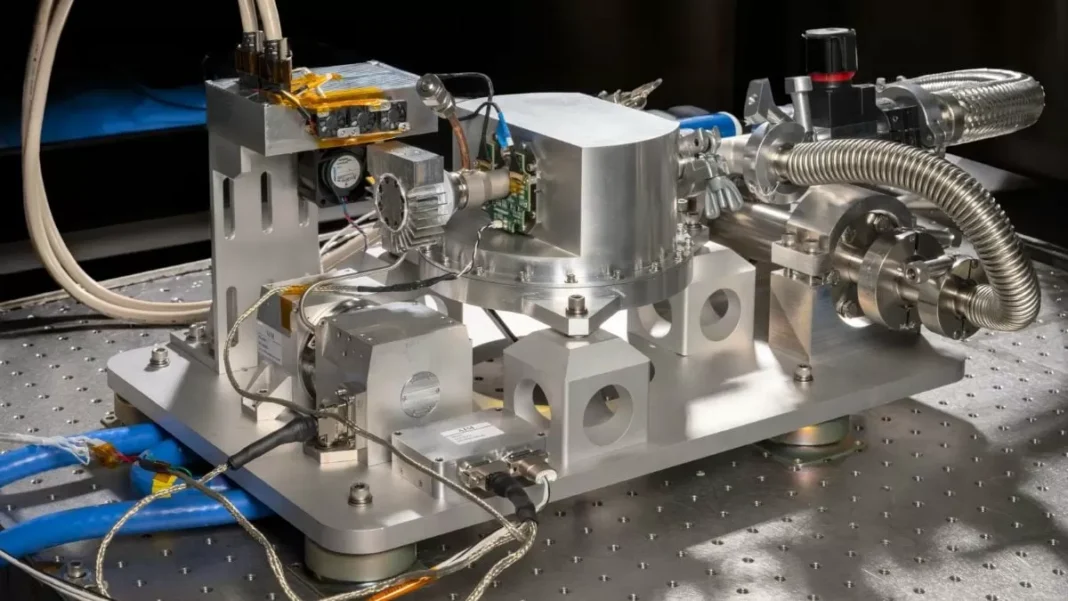NASA has once again proven its commitment to advancing technology for the betterment of our planet. Recently, the space agency tested its Compact Fire Infrared Radiance Spectral Tracker (c-FIRST) over California wildfires in an effort to improve real-time fire tracking. Managed by NASA’s Jet Propulsion Laboratory, this innovative instrument captures high-resolution thermal infrared data, allowing for the identification of temperature variations across wildfire-affected areas. Experts believe that this breakthrough technology could greatly assist firefighting agencies in their efforts to detect and combat wildfires.
The devastating effects of wildfires are well-known, causing destruction to homes, wildlife, and natural resources. In recent years, the frequency and intensity of wildfires have increased, posing a significant threat to communities and the environment. In response, NASA has been working tirelessly to develop new tools and techniques to aid in wildfire management and prevention. The c-FIRST instrument is the latest addition to their arsenal, and it has the potential to revolutionize the way we track and respond to wildfires.
The c-FIRST instrument is a compact, lightweight sensor that is mounted on an aircraft. It works by measuring the thermal infrared radiation emitted by the Earth’s surface. This radiation is then converted into temperature data, which is used to create high-resolution maps of the affected areas. These maps provide crucial information to firefighters, allowing them to quickly identify hotspots and track the spread of the fire. This real-time data can make a significant difference in the effectiveness of firefighting efforts, as it allows for more targeted and efficient deployment of resources.
During the recent testing, the c-FIRST instrument was flown over the raging wildfires in California, capturing thermal images of the affected areas. The data collected was then transmitted to a ground station, where it was processed and analyzed by experts. The results were impressive, with the instrument successfully detecting temperature variations as small as 0.1 degree Celsius. This level of precision is crucial in identifying the hottest areas of the fire, which are often the most difficult to control.
One of the key advantages of the c-FIRST instrument is its ability to operate in real-time. This means that the data can be transmitted and analyzed almost instantly, providing firefighters with up-to-date information on the fire’s behavior. This is a significant improvement over traditional methods of fire tracking, which often rely on satellite imagery that is only available every few hours. With the c-FIRST instrument, firefighters can have a more accurate and timely understanding of the fire, allowing them to make better decisions and respond more effectively.
The potential applications of the c-FIRST instrument go beyond just wildfire tracking. It can also be used to monitor other natural disasters, such as volcanic eruptions and oil spills. Additionally, it has the potential to aid in agricultural and forestry management, as well as urban planning. The possibilities are endless, and NASA is already exploring ways to further develop and improve this groundbreaking technology.
The success of the c-FIRST instrument is a testament to NASA’s dedication to using space technology for the benefit of humanity. This is not the first time that the agency has used its expertise to assist in disaster management. In the past, NASA has provided valuable data and imagery to aid in hurricane tracking and response efforts. With the c-FIRST instrument, they have once again demonstrated their ability to innovate and make a positive impact on our planet.
In conclusion, NASA’s c-FIRST instrument has shown great promise in improving real-time fire tracking. Its high-resolution thermal infrared data has the potential to greatly assist firefighting agencies in their efforts to detect and combat wildfires. This breakthrough technology has the potential to save lives, protect communities, and preserve our environment. As we continue to face the growing threat of wildfires, it is reassuring to know that NASA is working tirelessly to develop new tools and techniques to help us better understand and manage these disasters. The c-FIRST instrument is just one example of their commitment to making our world a safer and more sustainable place.



